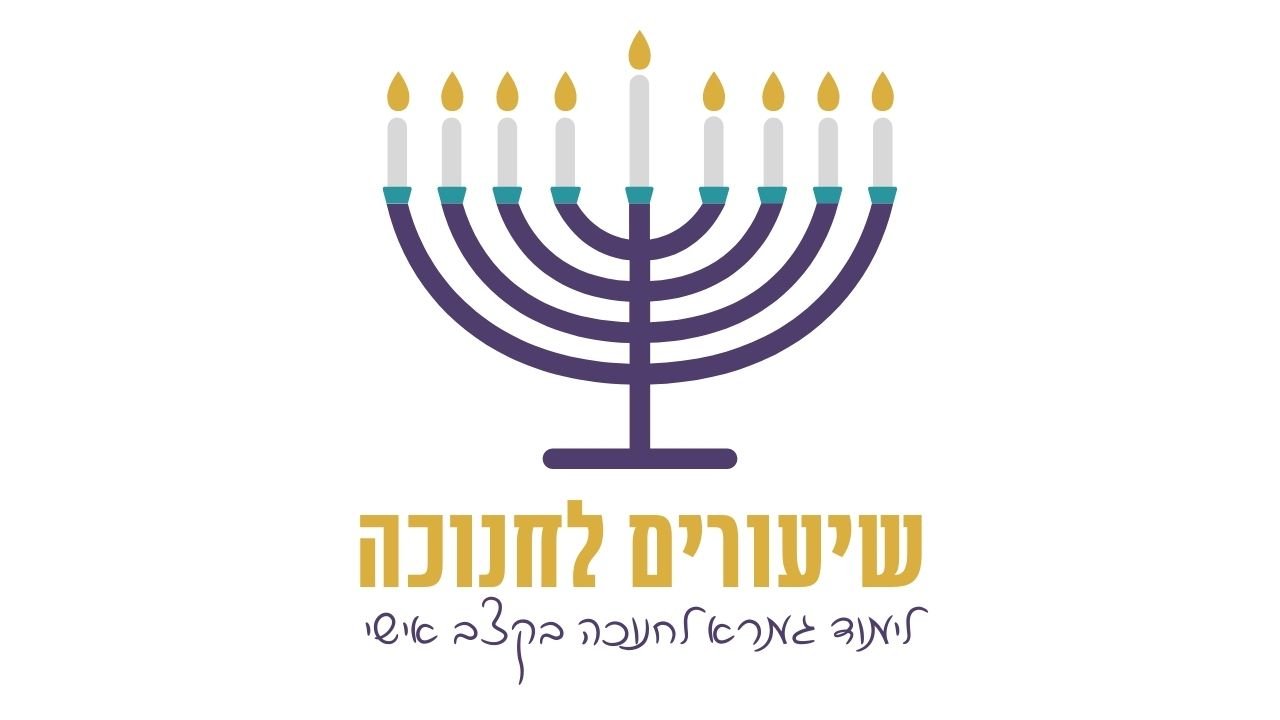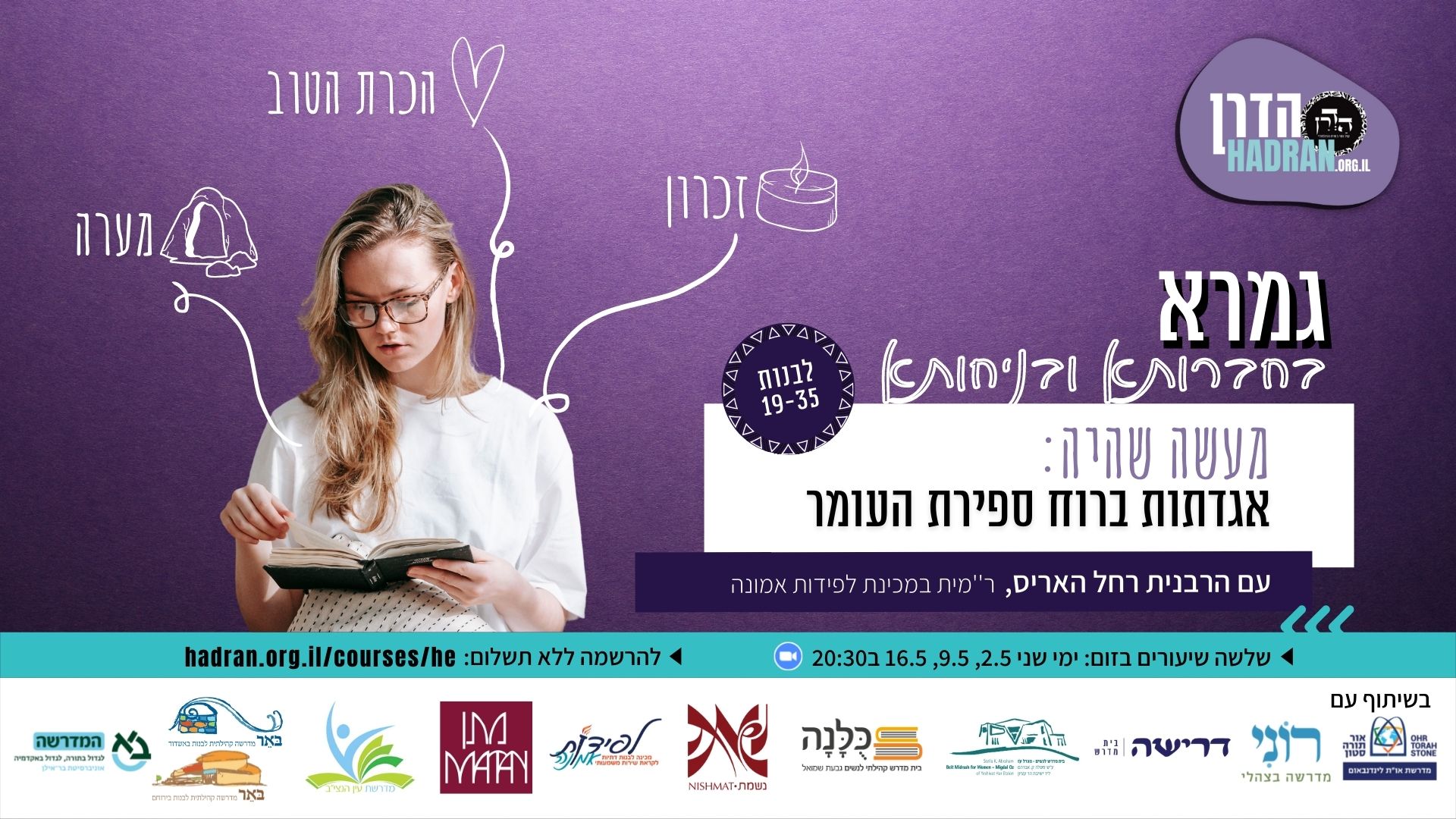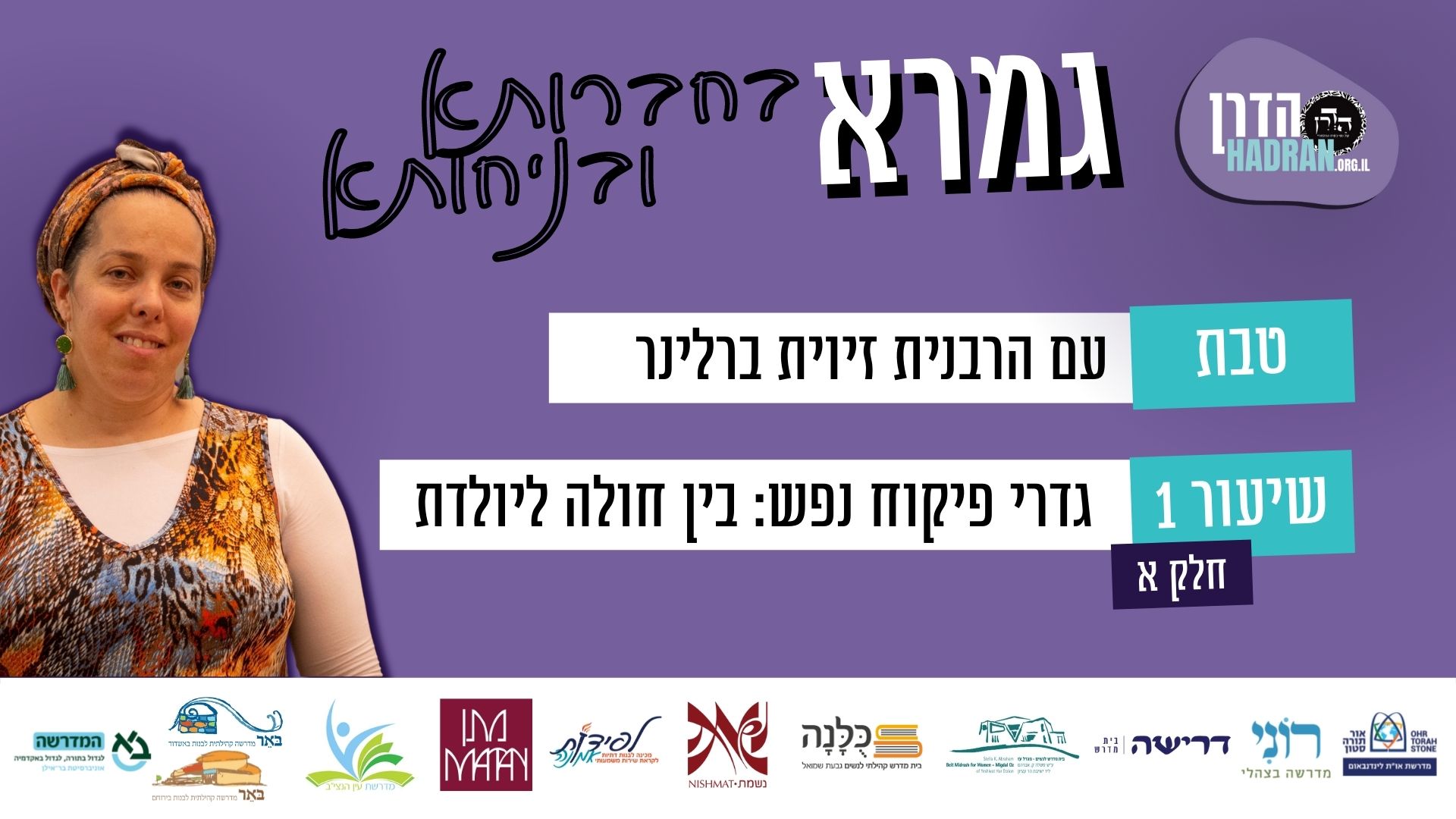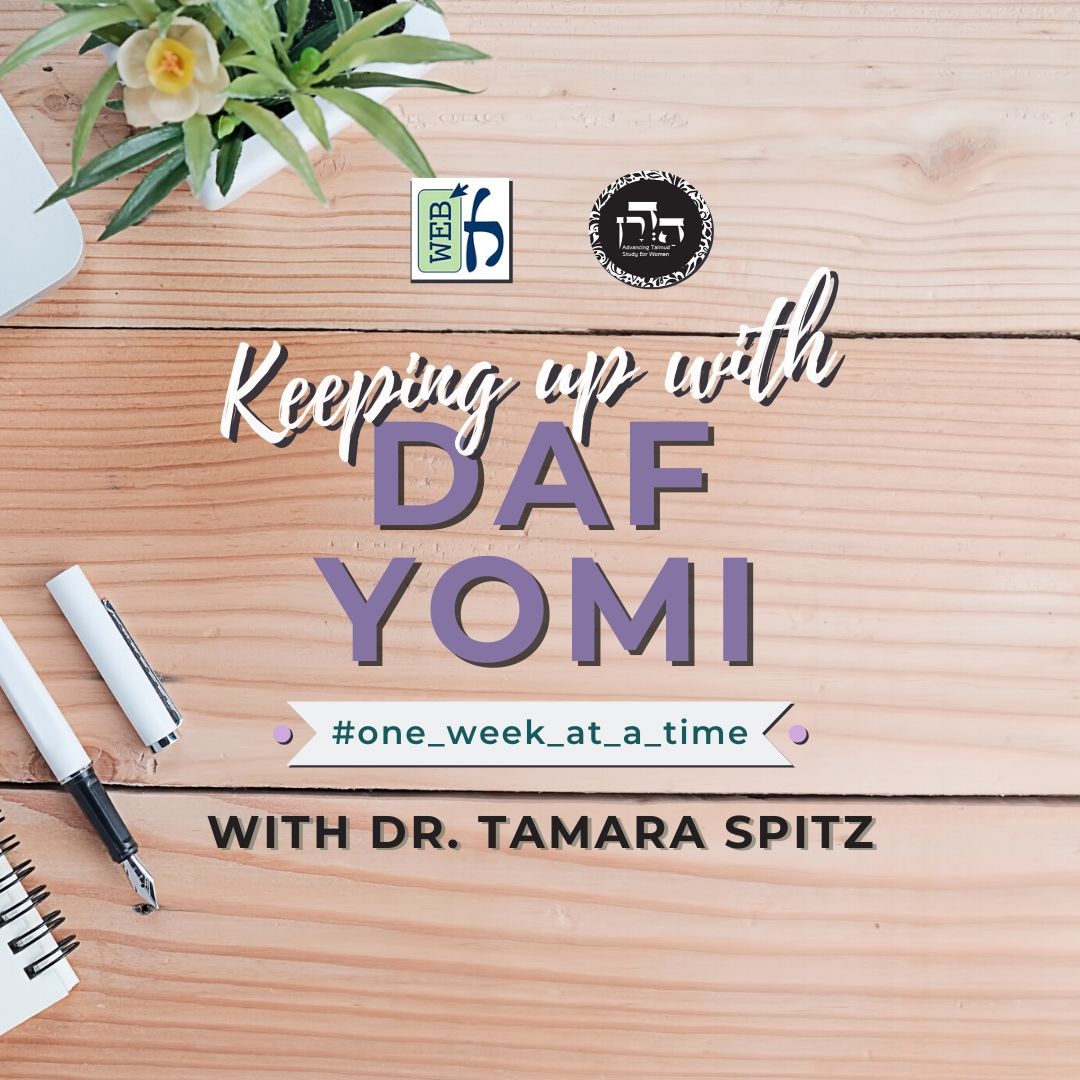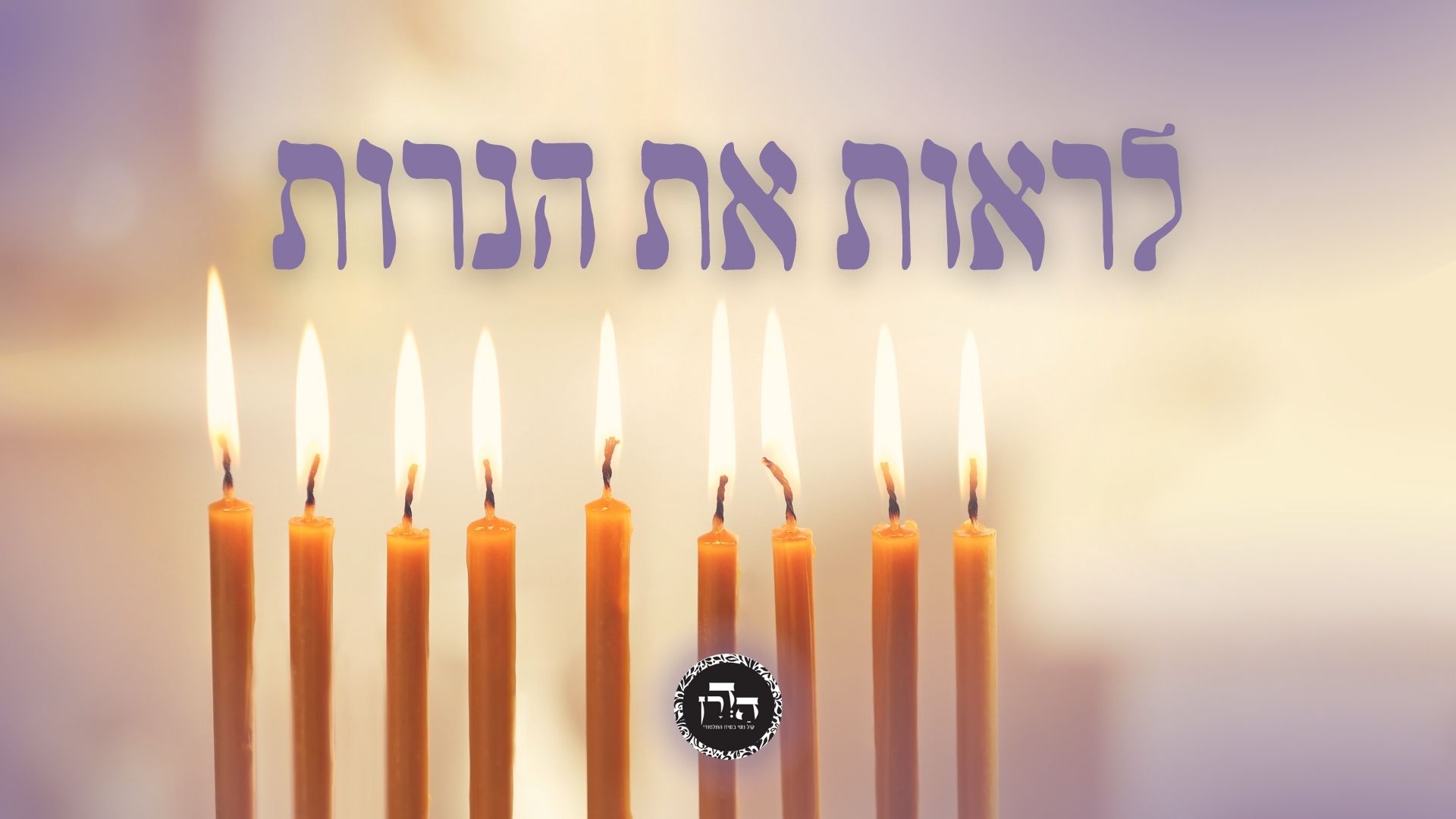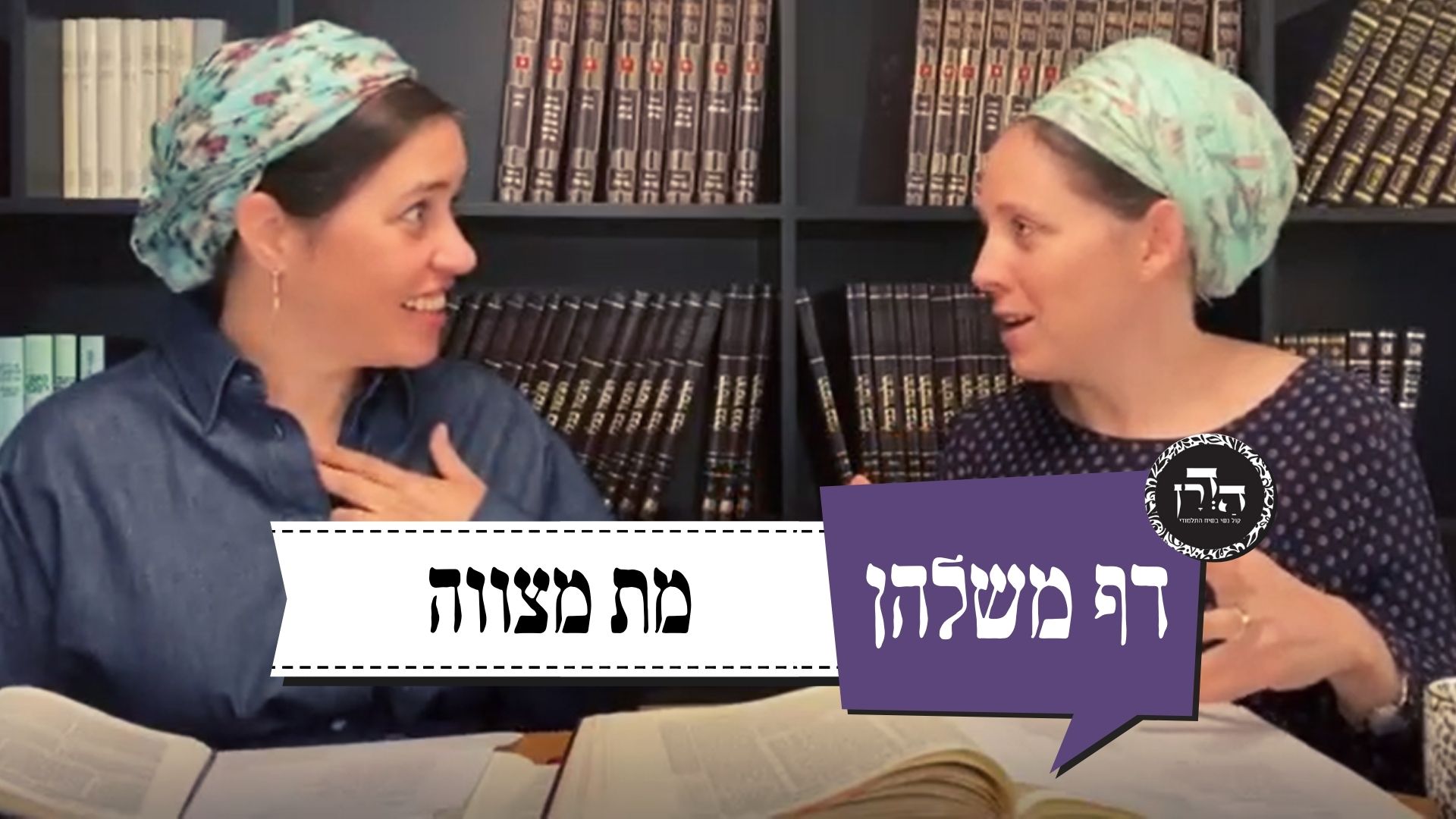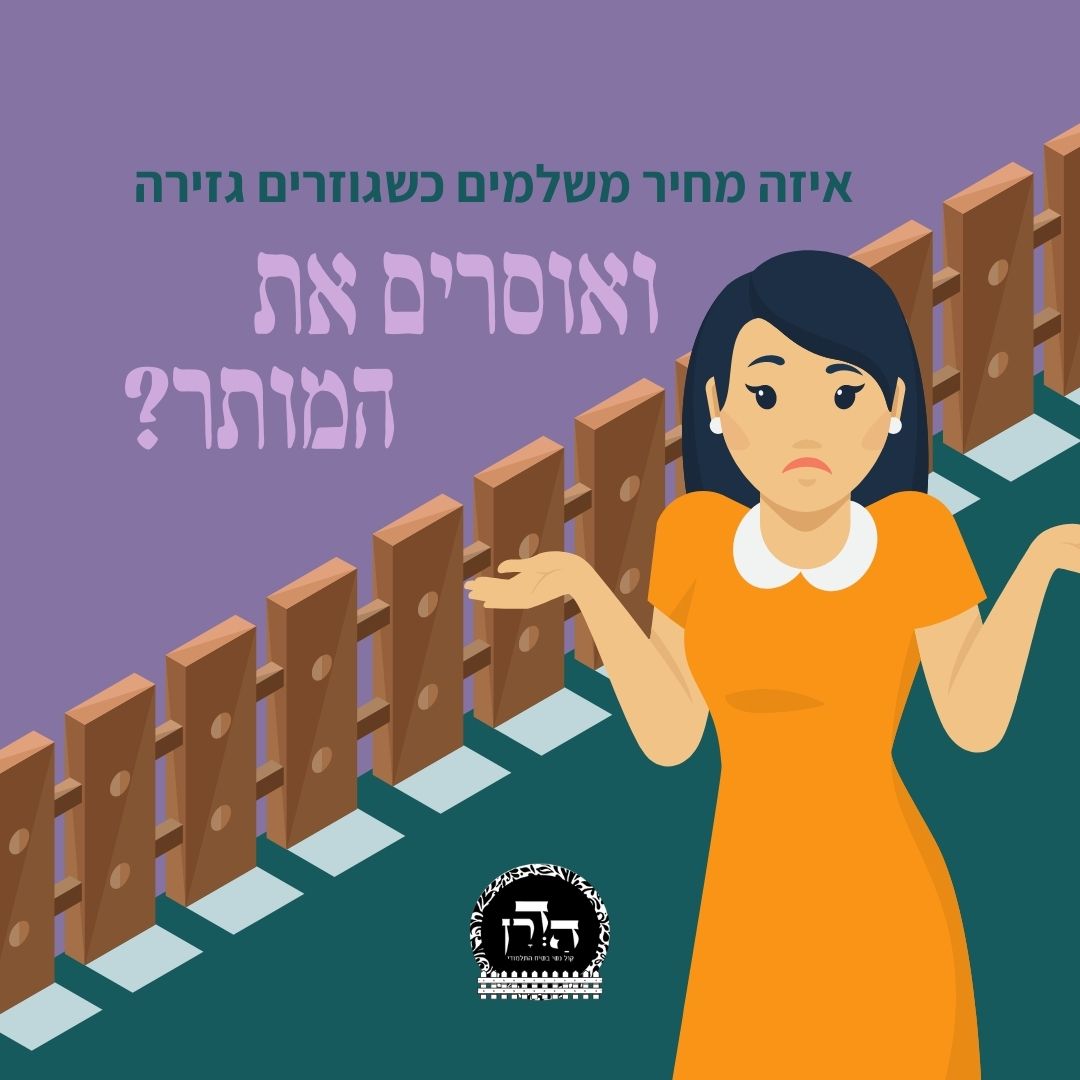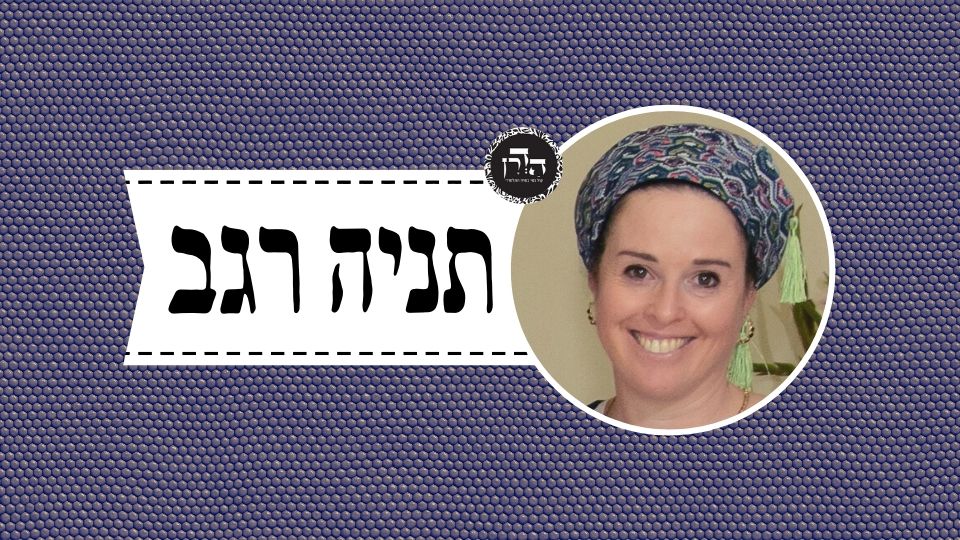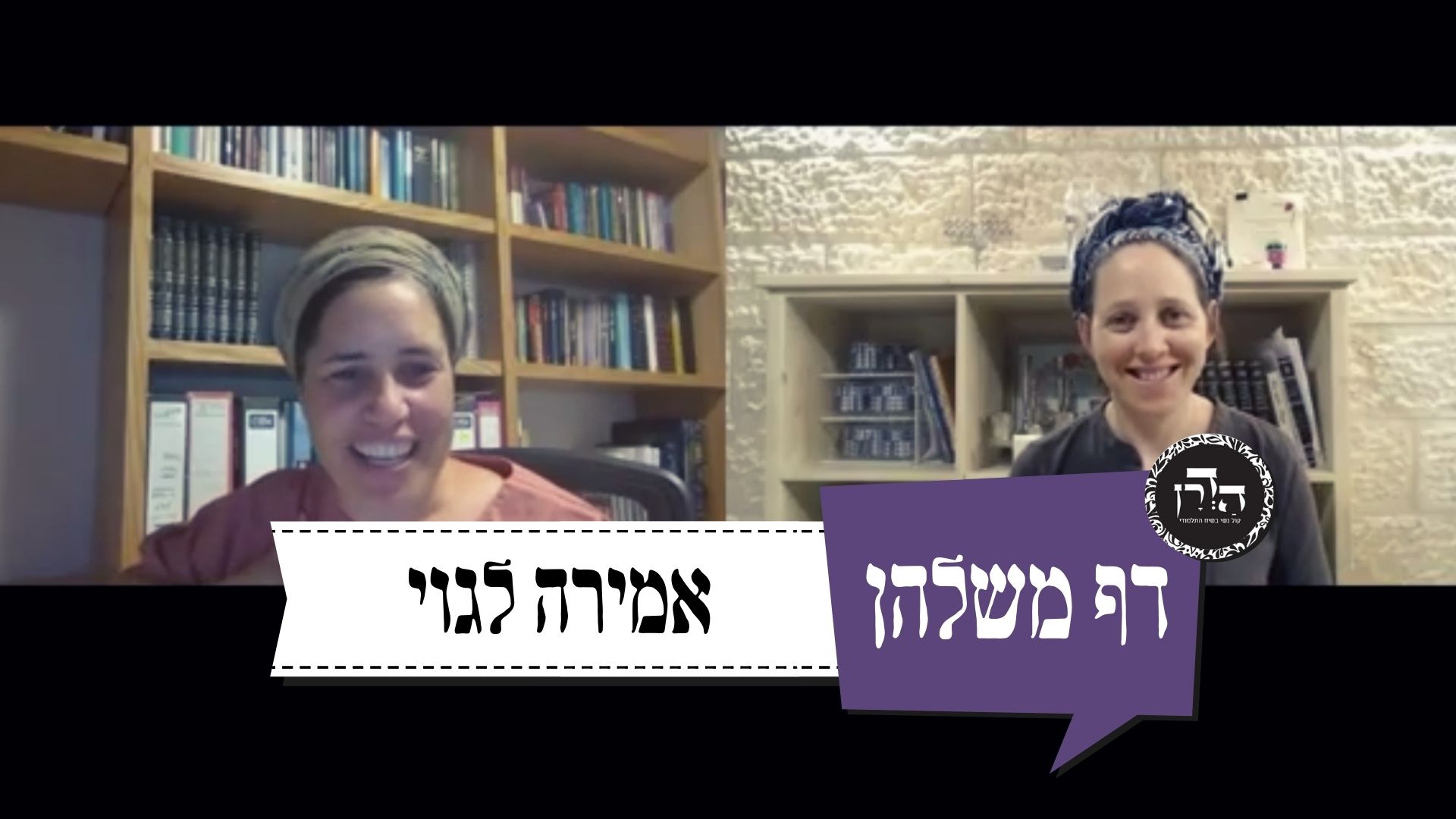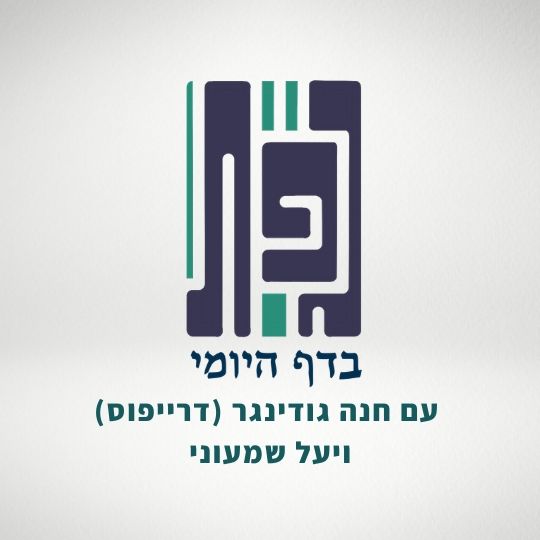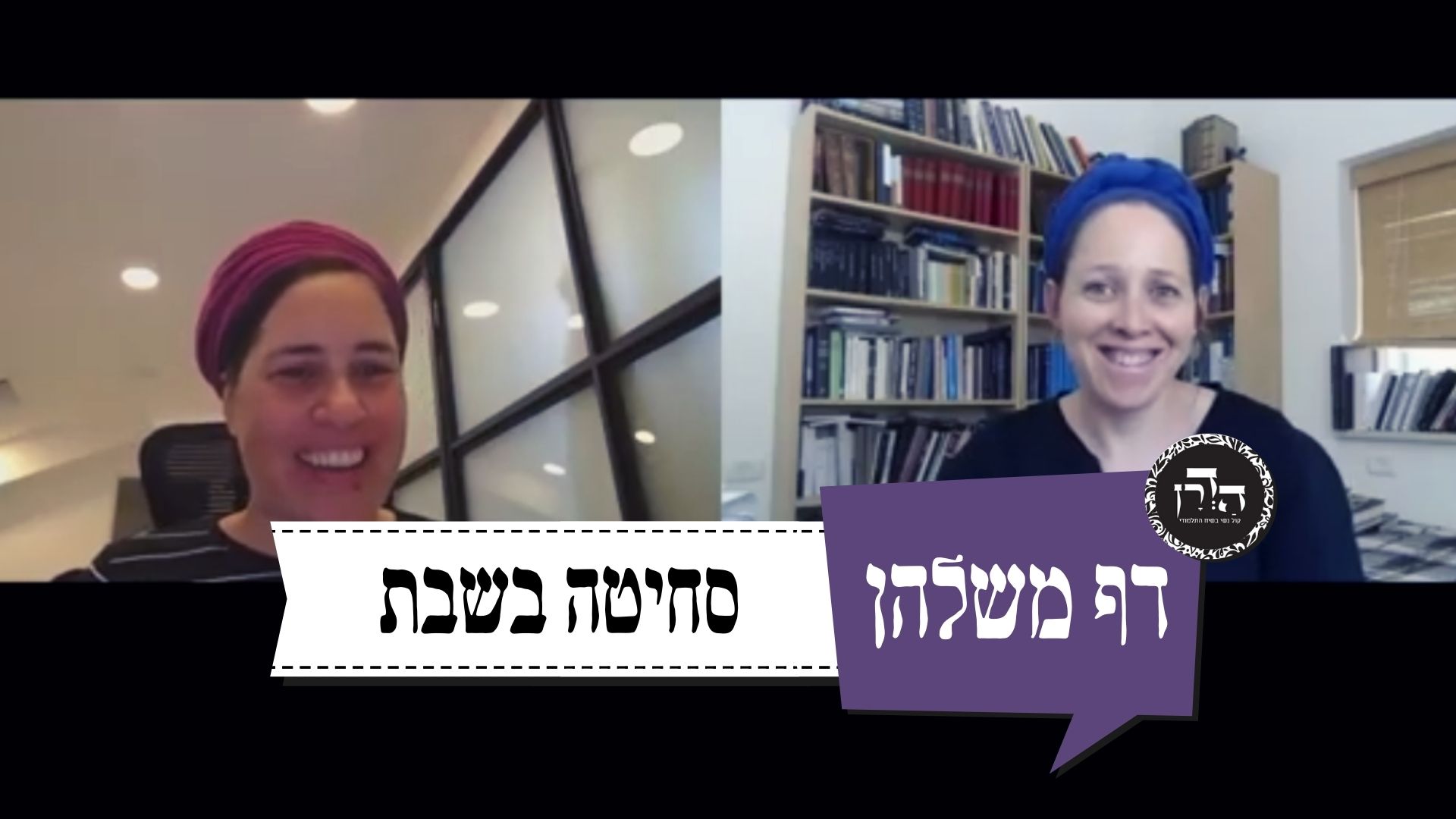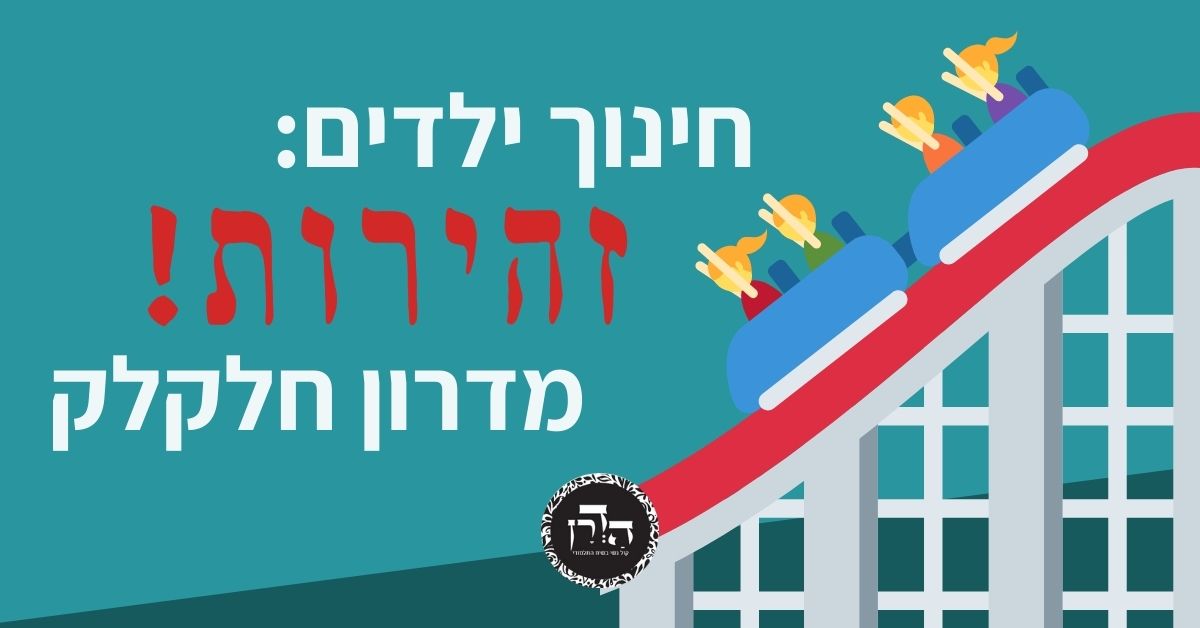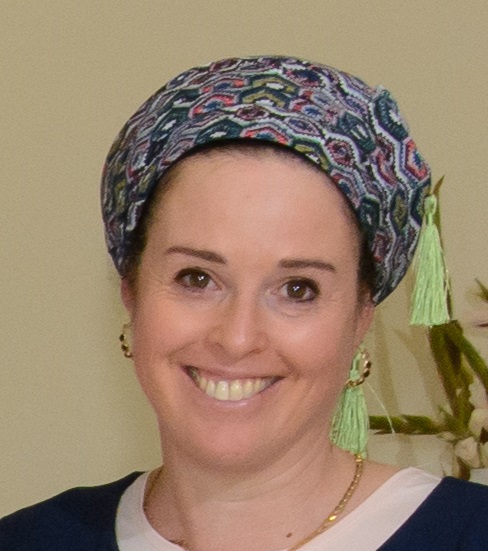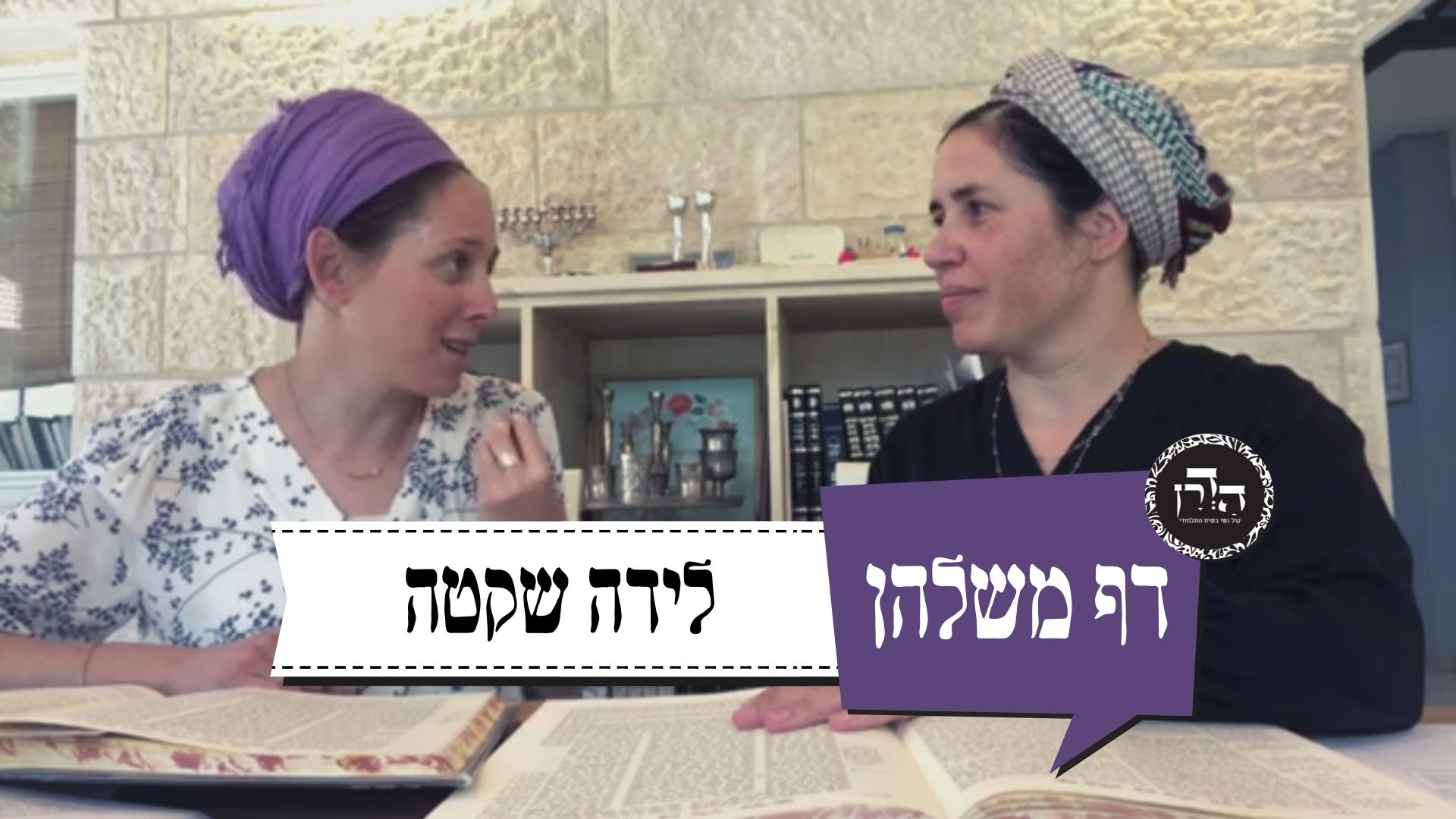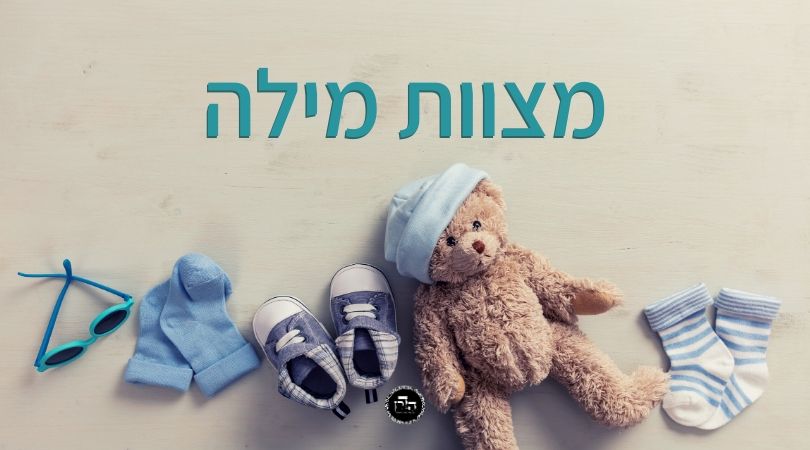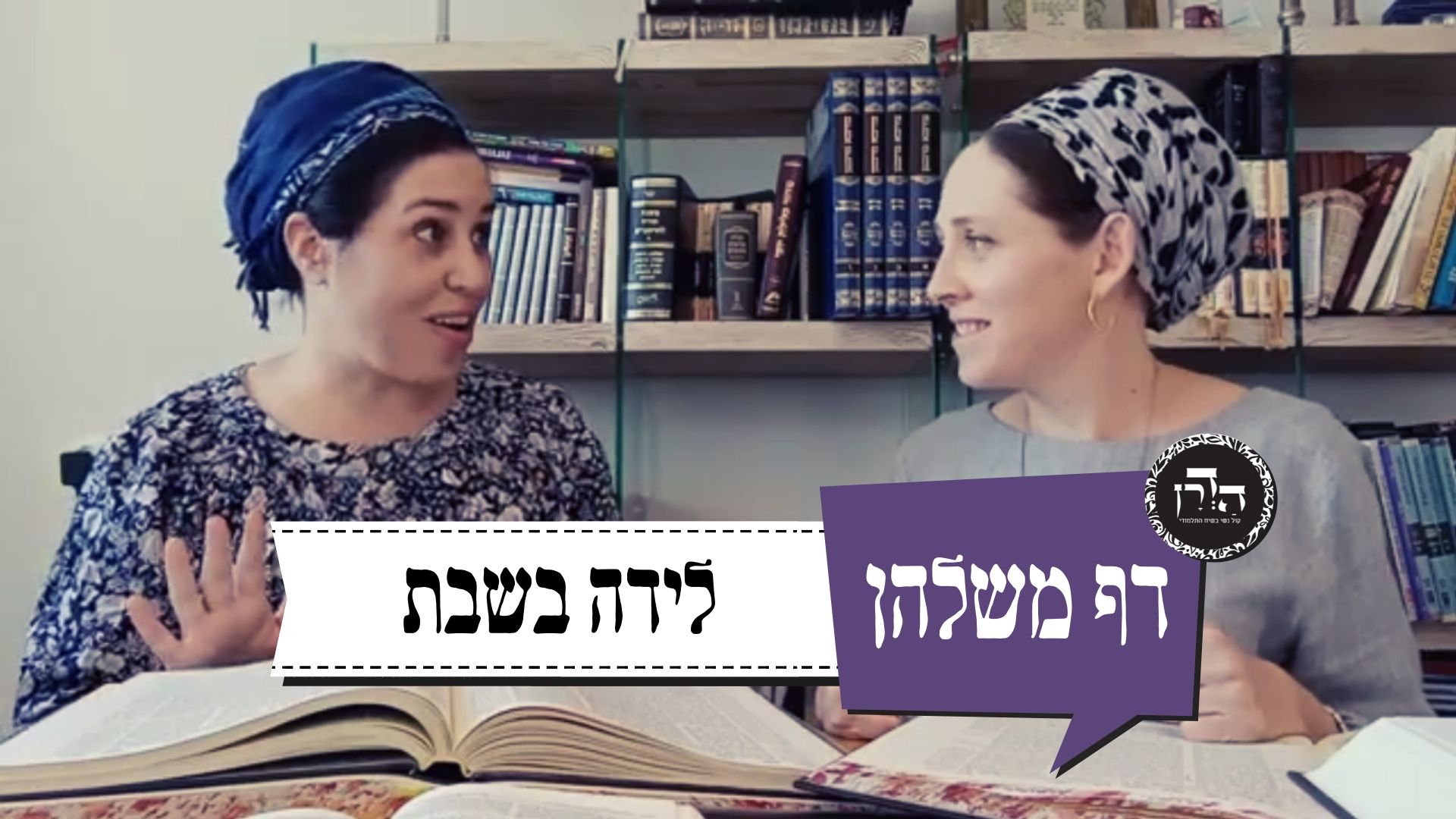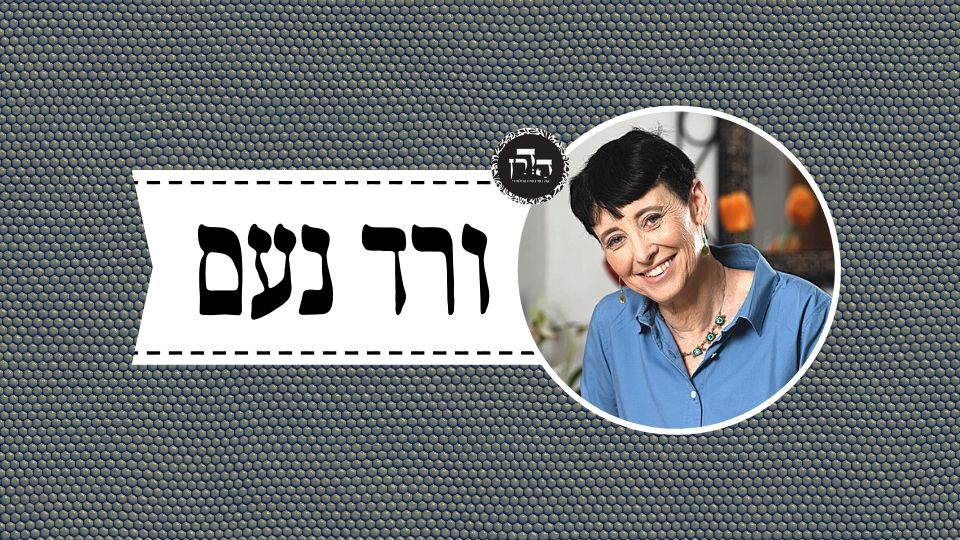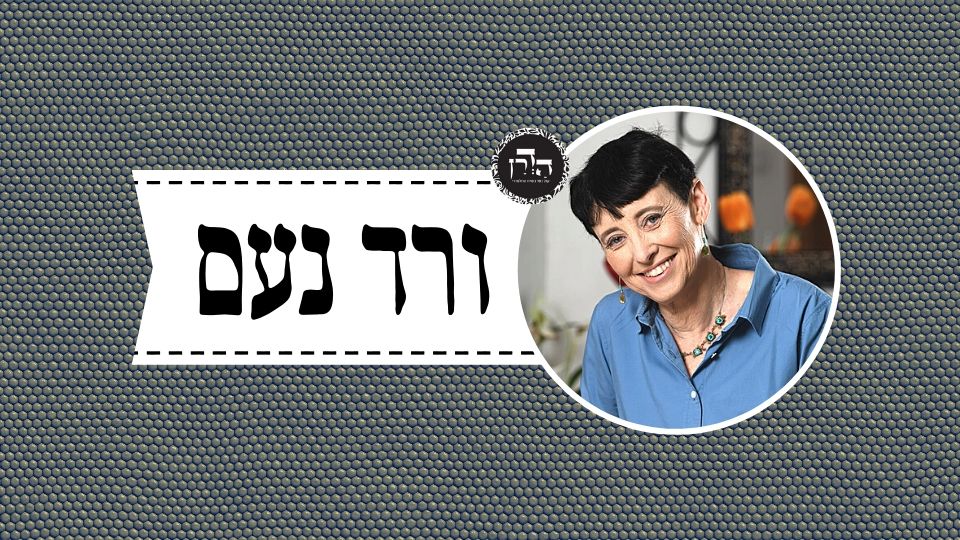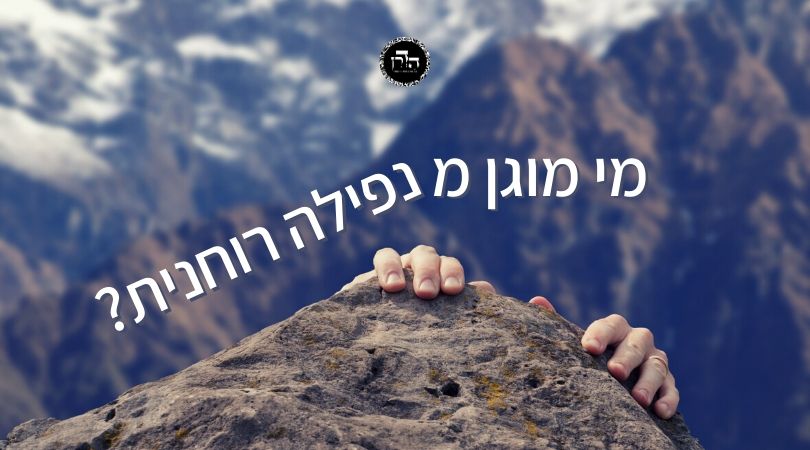המשנה והגמרא דנים במקרים של דברים שהבהמה לא יכולה לצאת איתם לרשות הרבים. הגמרא מסבירה את המציאות של המקרים שמצוטטים במשנה. מוזכרת פרתו של ר’ אלעזר בן עזריה שיצאה לרשות הרבים עם רצועה נגד שיטת החכמים והם לא היו מרוצים מזה. הגמרא מסבירה שזה לא היה פרתו אלא של שכנתו והיתה מיוחסת לו כי הוא לא מיחה בה. משם הגמרא מתחילה לדבר על חיוב תוכחה.
הלימוד החודש מוקדש ע”י בט בלקני לכבוד נכדתה, דבורה חנה סרח אייכל.
הלימוד החודש מוקדש לעילוי נשמת הרב ד”ר ריימונד הררי ז”ל, לרגל היארצייט הראשון שלו. בתפקידו כמחנך וכמנהל ישיבה דפלטבוש וכרב קהילה, הוא השפיע על אלפים בחכמתו, בחמימותו, ובמחויבותו הבלתי מתפשרת לתורה.
הלימוד השבוע מוקדש ע”י רות ודוד כהנא לכבוד ד”ר ג’ודי דושי ופרופסור פול גומפרס.
רוצה להקדיש שיעור?

הלימוד החודש מוקדש ע”י בט בלקני לכבוד נכדתה, דבורה חנה סרח אייכל.
הלימוד החודש מוקדש לעילוי נשמת הרב ד”ר ריימונד הררי ז”ל, לרגל היארצייט הראשון שלו. בתפקידו כמחנך וכמנהל ישיבה דפלטבוש וכרב קהילה, הוא השפיע על אלפים בחכמתו, בחמימותו, ובמחויבותו הבלתי מתפשרת לתורה.
הלימוד השבוע מוקדש ע”י רות ודוד כהנא לכבוד ד”ר ג’ודי דושי ופרופסור פול גומפרס.
העמקה
רוצה להבין מה באמת קורה מתחת לפני השטח של הסוגיה?
שיעורים, פודקאסטים והרחבות של מיטב המורות שלנו יפתחו לך עוד זוויות וכיווני חשיבה.
חדשה בלימוד הגמרא?
זה הדף הראשון שלך? איזו התרגשות עצומה! יש לנו בדיוק את התכנים והכלים שיעזרו לך לעשות את הצעדים הראשונים ללמידה בקצב וברמה שלך, כך תוכלי להרגיש בנוח גם בתוך הסוגיות המורכבות ומאתגרות.
פסיפס הלומדות שלנו
גלי את קהילת הלומדות שלנו, מגוון נשים, רקעים וסיפורים. כולן חלק מתנועה ומסע מרגש ועוצמתי.
שבת נד
שִׁית זוֹנָה וּנְצוּרַת לֵב״.
with the attire of a harlot [shit zona] and wily of heart” (Proverbs 7:10). Sheḥuzot can be interpreted as an acronym of the words shit zona, attire of a harlot, with the letters tav and ḥet, which are similar in form, interchanged.
הָרְחֵלִים יוֹצְאוֹת כְּבוּלוֹת. מַאי ״כְּבוּלוֹת״? — שֶׁמְּכַבְּלִין אַלְיָה שֶׁלָּהֶן לְמַטָּה כְּדֵי שֶׁלֹּא יַעֲלוּ עֲלֵיהֶן זְכָרִים. מַאי מַשְׁמַע דְּהַאי ״כָּבוּל״ לִישָּׁנָא דְּלָא עָבֵיד פֵּירֵי הוּא — דִּכְתִיב: ״מָה הֶעָרִים [הָאֵלֶּה] אֲשֶׁר נָתַתָּ לִּי אָחִי וַיִּקְרָא לָהֶן אֶרֶץ כָּבוּל עַד הַיּוֹם הַזֶּה״.
We learned in the mishna: Ewes may go out kevulot. The Gemara asks: What is the meaning of kevulot? It means that they bind their tails down with animal hide so that the males will not mount them. The Gemara explains: From where may it be inferred that this word kavul is a term meaning does not produce fruit? As it is written, when Solomon gave a portion of land to Hiram, he complained: “What cities are these which you have given me, my brother? And he called them the land of Kavul to this day” (I Kings 9:13).
מַאי ״אֶרֶץ כָּבוּל״? אָמַר רַב הוּנָא: שֶׁהָיוּ בָּהּ בְּנֵי אָדָם שֶׁמְּכוּבָּלִין בְּכֶסֶף וּבְזָהָב. אֲמַר לֵיהּ רָבָא: אִי הָכִי, הַיְינוּ דִּכְתִיב: ״(כִּי לֹא) יָשְׁרוּ בְּעֵינָיו״ — מִפְּנֵי שֶׁמְּכוּבָּלִין בְּכֶסֶף וּבְזָהָב לֹא יָשְׁרוּ בְּעֵינָיו? אֲמַר לֵיהּ: אִין, כֵּיוָן דְּעַתִּירֵי וּמְפַנְּקִי, לָא עָבְדִי עֲבִידְתָּא.
What is the meaning of the land of Kavul? Rav Huna said: That the people living there were bound [mekhubalin] and surrounded by silver and gold. Rava said to him: If so, is that what is written: “And Hiram came out of Tyre to see the cities which Solomon had given him, and they pleased him not” (I Kings 9:12)? Because the people there were bound in silver and gold, the cities were not pleasing in his eyes? Rav Huna said to him: Yes, indeed, it was precisely the abundant wealth that displeased Hiram. Since the people were wealthy and delicate, they did not perform labor. Hiram was seeking people whom he could enlist in the service of the king.
רַב נַחְמָן בַּר יִצְחָק אָמַר: אֶרֶץ חוֹמְטוֹן הָיְתָה. וְאַמַּאי קָרֵי לַהּ ״כָּבוּל״ — דְּמִשְׂתָּרְגָא בַּהּ כַּרְעָא עַד כַּבְלָא. וְאָמְרִי אִינָשֵׁי: אַרְעָא מְכַבַּלְתָּא דְּלָא עָבְדָא פֵּירֵי.
Rav Naḥman bar Yitzḥak said: It was a sandy [ḥomton] expanse of land. And why was it called Kavul? It is because the leg sinks into it up to the ankle [kavla]. And people say in describing poor quality land: Land that is bound [mekhabela] shut, i.e., that does not produce fruit.
כְּבוּנוֹת. מַאי ״כְּבוּנוֹת״? — שֶׁמְכַבְּנִין אוֹתָן לְמֵילָת. כְּדִתְנַן: שְׂאֵת — כְּצֶמֶר לָבָן. מַאי צֶמֶר לָבָן? אָמַר רַב בִּיבִי בַּר אַבָּיֵי: כְּצֶמֶר נָקִי בֶּן יוֹמוֹ שֶׁמְכַבְּנִין אוֹתוֹ לְמֵילָת.
We learned in the mishna: Ewes may go out kevunot. The Gemara asks: What is the meaning of kevunot? It is that they covered [mekhabnin] the animal to produce fine wool. Sheep were wrapped in cloth from the day they were born so that their wool would remain perfectly clean and it could be used in fashioning especially fine wool garments. As we learned in a mishna: The color of a leprous sore [se’et] is like that of white wool. The Gemara asked: What is white wool? Rav Beivai bar Abaye said: Like the clean wool of a newborn lamb, which they cover from birth to produce fine wool.
וְהָעִזִּים יוֹצְאוֹת צְרוּרוֹת. אִיתְּמַר, רַב אָמַר: הֲלָכָה כְּרַבִּי יְהוּדָה, וּשְׁמוּאֵל אָמַר: הֲלָכָה כְּרַבִּי יוֹסֵי.
Our mishna continues: And the she-goats may go out with their udders bound. Rabbi Yosei prohibits doing so. Rabbi Yehuda distinguishes between a case where the udders were bound to dry the milk supply and a case where they were bound to conserve the milk. It was stated that the amora’im disagreed with regard to the ruling in this dispute: Rav said: The halakha is in accordance with the opinion of Rabbi Yehuda, and Shmuel said: The halakha is in accordance with the opinion of Rabbi Yosei.
וְאִיכָּא דְמַתְנֵי לְהָא שְׁמַעְתָּא בְּאַפֵּי נַפְשַׁיהּ. רַב אָמַר: לְיַבֵּשׁ מוּתָּר וְלֹא לֵחָלֵב, וּשְׁמוּאֵל אָמַר: אֶחָד זֶה וְאֶחָד זֶה אָסוּר.
And there are those who teach this halakha independent of the mishna. Rav said: If the udders were bound to dry the milk supply it is permitted, and not if they were bound to conserve the milk. And Shmuel said: Both this and that are prohibited.
וְאִיכָּא דְמַתְנֵי לַהּ אַהָא: עִזִּים יוֹצְאוֹת צְרוּרוֹת לְיַבֵּשׁ אֲבָל לֹא לֵחָלֵב. מִשּׁוּם רַבִּי יְהוּדָה בֶּן בְּתֵירָא אָמְרוּ: כָּךְ הֲלָכָה, אֲבָל מִי מֵפִיס אֵיזוֹ לְיַבֵּשׁ וְאֵיזוֹ לֵחָלֵב? וּמִתּוֹךְ שֶׁאֵין מַכִּירִים, אֶחָד זֶה וְאֶחָד זֶה אָסוּר. אָמַר שְׁמוּאֵל: וְאָמְרִי לַהּ אָמַר רַב יְהוּדָה אָמַר שְׁמוּאֵל: הֲלָכָה כְּרַבִּי יְהוּדָה בֶּן בְּתֵירָא. כִּי אֲתָא רָבִין אָמַר רַבִּי יוֹחָנָן: הֲלָכָה כְּתַנָּא קַמָּא.
And there are those who taught this dispute with regard to this baraita: Goats may go out with their udders bound to dry the milk supply but not to conserve the milk. In the name of Rabbi Yehuda ben Beteira they said: That is the halakha, based on the letter of the law, but who can cast lots to determine by sight alone which udder is bound to dry the milk supply and which was bound to conserve the milk? And since one cannot distinguish between them, the Sages said: Both this and that are prohibited. Shmuel said, and some say Rav Yehuda said that Shmuel said: The halakha is in accordance with the opinion of Rabbi Yehuda ben Beteira. In terms of practical halakha, according to all versions of the disagreement, Shmuel holds that it is prohibited in both cases. When Ravin came from Eretz Yisrael to Babylonia, he said that Rabbi Yoḥanan said: The halakha is in accordance with the opinion of the anonymous first tanna of the mishna. He permits goats to go out with their udders bound in all cases.
מַתְנִי׳ וּבַמָּה אֵינָהּ יוֹצְאָה? — לֹא יֵצֵא גָּמָל בִּמְטוּלְטֶלֶת, לֹא עָקוּד וְלֹא רָגוּל, וְכֵן שְׁאָר כׇּל הַבְּהֵמוֹת.
MISHNA: And with what may an animal not go out into the public domain on Shabbat? A camel may not go out with a saddlecloth, nor may it go out akud or ragul, which are different ways of tying its legs together, as will be explained in the Gemara. And likewise, tying all other animals in those manners is prohibited.
לֹא יִקְשׁוֹר גְּמַלִּים זֶה בָּזֶה וְיִמְשׁוֹךְ, אֲבָל מַכְנִיס חֲבָלִים לְתוֹךְ יָדוֹ וְיִמְשׁוֹךְ, וּבִלְבַד שֶׁלֹּא יִכְרוֹךְ.
And likewise, one may not tie camels one to the other and pull the lead camel, thereby pulling the others after it. However, he may place the ropes tied to each of the camels in his hand and pull them all, provided that he does not intertwine the ropes.
גְּמָ׳: תָּנָא לֹא יֵצֵא הַגָּמָל בִּמְטוּלְטֶלֶת הַקְּשׁוּרָה לוֹ בִּזְנָבוֹ, אֲבָל יוֹצֵא הוּא בִּמְטוּלְטֶלֶת הַקְּשׁוּרָה בִּזְנָבוֹ וּבְחוֹטַרְתּוֹ. אָמַר רַבָּה בַּר רַב הוּנָא: יוֹצֵא הַגָּמָל בִּמְטוּלְטֶלֶת הַקְּשׁוּרָה לוֹ בְּשִׁילְיְיתָא.
GEMARA: It was taught in the Tosefta: A camel may not go out with a saddlecloth tied to its tail alone. However, it may go out with a saddlecloth tied to both its tail and its hump, as in that case one can assume that the saddlecloth will not fall off. Rabba bar Rav Huna said: A female camel may go out with a saddlecloth tied to its afterbirth. Because any movement of the saddlecloth will cause pain, the animal will not attempt to detach it. Therefore, there is no room for concern lest it fall.
לֹא עָקוּד וְלֹא רָגוּל. אָמַר רַב יְהוּדָה: ״עָקוּד״ — עֲקֵידַת יָד וָרֶגֶל, כְּיִצְחָק בֶּן אַבְרָהָם. ״רָגוּל״ — שֶׁלֹּא יָכוֹף יָדוֹ עַל גַּבֵּי זְרוֹעוֹ וְיִקְשׁוֹר.
We learned in the mishna: A camel may not go out akud or ragul. Rav Yehuda said: Akud means that the animal’s foreleg and hind leg are bound together, similar to the binding of Isaac, son of Abraham, with regard to whom the term vaya’akod is employed. Ragul means that one may not bend the lower part of the foreleg onto the upper foreleg and tie it. That was done so that the camel would have the use of only three legs and would be unable to run away.
מֵיתִיבִי: ״עָקוּד״ — שְׁתֵּי יָדַיִם וּשְׁתֵּי רַגְלַיִם. ״רָגוּל״ — שֶׁלֹּא יָכוֹף יָדוֹ עַל גַּבֵּי זְרוֹעוֹ וְיִקְשׁוֹר! הוּא דְּאָמַר כִּי הַאי תַּנָּא, דְּתַנְיָא: ״עָקוּד״ — עֲקֵידַת יָד וָרֶגֶל אוֹ שְׁתֵּי יָדַיִם וּשְׁתֵּי רַגְלַיִם, ״רָגוּל״ — שֶׁלֹּא יָכוֹף יָדוֹ עַל גַּבֵּי זְרוֹעוֹ וְיִקְשׁוֹר.
The Gemara raises an objection from the following baraita: Akud means that the animal’s two forelegs and two hind legs are bound together. Ragul means that one may not bend the lower part of the foreleg onto the upper foreleg and tie it. The Gemara answers: Rav Yehuda holds in accordance with this tanna, as it was taught in a baraita: Akud means that either the animal’s foreleg and hind leg or its two forelegs and two hind legs are bound together. Ragul means that one may not bend the lower part of the foreleg onto the upper foreleg and tie it.
וְאַכַּתִּי לָא דָּמֵי: בִּשְׁלָמָא רֵישָׁא וְסֵיפָא — נִיחָא, מְצִיעֲתָא קַשְׁיָא!
The Gemara asks: And this baraita and Rav Yehuda’s statement are still not the same. Granted, the first clause, the first case of akud, and the last clause, the case of ragul, work out well. The baraita and the opinion of Rav Yehuda correspond. However, the middle clause is difficult. According to the baraita, when the animal’s two forelegs and two hind legs are bound together, that is also considered akud, contrary to Rav Yehuda’s opinion.
אֶלָּא הוּא דְּאָמַר כִּי הַאי תַּנָּא, ״עָקוּד״ — עֲקֵידַת יָד וָרֶגֶל, כְּיִצְחָק בֶּן אַבְרָהָם. ״רָגוּל״ — שֶׁלֹּא יָכוֹף יָדוֹ עַל גַּבֵּי זְרוֹעוֹ וְיִקְשׁוֹר.
Rather, Rav Yehuda stated his opinion in accordance with this tanna, who said in a baraita: Akud means that the animal’s foreleg and hind leg are bound together, similar to the binding of Isaac, son of Abraham. Ragul means that one may not bend the lower part of the foreleg onto the upper foreleg and tie it.
וְלֹא יִקְשׁוֹר גְּמַלִּים. מַאי טַעְמָא? אָמַר רַב אָשֵׁי: מִשּׁוּם דְּמֶיחְזֵי כְּמַאן דְּאָזֵיל לְחִינְגָּא.
We learned in the mishna: And one may not tie camels one to the other and pull the lead camel, thereby pulling the others after it. The Gemara asks: What is the reason for this? Rav Ashi said: Because he appears like one going to the market [ḥinga] to sell merchandise or to deliver a caravan of camels. In deference to Shabbat, one may not create that impression.
אֲבָל מַכְנִיס. אָמַר רַב אָשֵׁי: לֹא שָׁנוּ אֶלָּא לְעִנְיַן כִּלְאַיִם. כִּלְאַיִם דְּמַאי? אִילֵּימָא כִּלְאַיִם דְּאָדָם, וְהָתְנַן: אָדָם מוּתָּר עִם כּוּלָּם לַחֲרוֹשׁ וְלִמְשׁוֹךְ!
The mishna continues: However, he may place the ropes tied to each of the camels in his hand and pull them all, provided that he does not intertwine the ropes. Rav Ashi said: This prohibition was taught not with regard to the halakhot of Shabbat but only with regard to the halakhot of prohibited mixtures of diverse kinds. The Gemara asks: Diverse kinds of what? If you say that it is referring to the prohibited mixture of the diverse kinds of man and animal, i.e., a person may not be tied to an animal, just as plowing with the diverse kinds of an ox and a donkey is prohibited, that is difficult. Didn’t we learn in a mishna: A person is permitted to plow and to pull a wagon together with all animals, as the prohibition is limited to diverse kinds of animals?
אֶלָּא כִּלְאַיִם דַּחֲבָלִים. וְהָתַנְיָא: הַתּוֹכֵף תְּכִיפָה אַחַת — אֵינָהּ חִיבּוּר?
Rather, the problem here is one of diverse kinds of ropes. If one rope is made of wool and another of linen, it is prohibited to intertwine them because that would create a forbidden mixture of the diverse kinds of wool and linen. However, this too is difficult, as, wasn’t it taught in a baraita: One who attaches a swatch of wool and a swatch of linen with a single stitch or knot, it is not considered a connection with regard to the prohibition of diverse kinds? All the more so in this case, where the ropes are not tied together at all but are merely intertwined, it should not be considered a connection.
לְעוֹלָם כִּלְאַיִם דַּחֲבָלִים, וְהָכִי קָאָמַר: וּבִלְבַד שֶׁלֹּא יִכְרוֹךְ וְיִקְשׁוֹר.
The Gemara answers: Actually, the problem here is one of diverse kinds of ropes, and the mishna is saying as follows: Provided that he does not intertwine the ropes and tie them together. Ropes that are intertwined and tied together constitute a double knot, which is considered a connection with regard to the prohibition of diverse kinds of wool and linen.
אָמַר שְׁמוּאֵל: וּבִלְבַד שֶׁלֹּא יֵצֵא [חֶבֶל] מִתַּחַת יָדוֹ טֶפַח. וְהָא תָּנָא דְּבֵי שְׁמוּאֵל טִפְחַיִים!
Shmuel said that there is another restriction that applies to pulling camels with ropes on Shabbat. It is only permitted provided that a handbreadth of the rope does not hang below his hand to avoid the appearance that he is carrying a rope in his hand on Shabbat. The Gemara raises an objection: Didn’t a Sage of the school of Shmuel teach a baraita: Provided that two handbreadths of the rope do not hang below his hand?
אָמַר אַבָּיֵי: הַשְׁתָּא דְּאָמַר שְׁמוּאֵל טֶפַח, וְתָנָא דְּבֵי שְׁמוּאֵל טִפְחַיִים — שְׁמוּאֵל הֲלָכָה לְמַעֲשֶׂה אֲתָא לְאַשְׁמוֹעִינַן.
Abaye said: Now that Shmuel said one handbreadth, and a Sage of the school of Shmuel taught two handbreadths, it is reasonable to conclude that Shmuel came to teach us the practical halakha. Even though the tanna’im permitted pulling the camel as long as there is less than two handbreadths of rope hanging below his hand, in practice, one should be stringent and not leave even one handbreadth hanging.
וְהָתַנְיָא: וּבִלְבַד שֶׁיַּגְבִּיהַּ מִן הַקַּרְקַע טֶפַח! כִּי תַּנְיָא הַהִיא בְּחַבְלָא דְּבֵינֵי בֵּינֵי.
The Gemara raises an objection: Wasn’t it taught in a baraita: This is only permitted provided that he raises the rope one handbreadth from the ground? Apparently, there is no restriction with regard to the length of rope that may hang below the person’s hand. The Gemara answers: When this baraita was taught, it was taught with regard to the length of rope between the camel and the person holding it. That part of the rope may not sag to the ground; rather, it must be raised at least one handbreadth so that it is clear that the rope is attached to the camel.
מַתְנִי׳ אֵין חֲמוֹר יוֹצֵא בַּמַּרְדַּעַת בִּזְמַן שֶׁאֵינָהּ קְשׁוּרָה לוֹ, וְלֹא בַּזּוּג אַף עַל פִּי שֶׁהוּא פָּקוּק, וְלֹא בְּסוּלָּם שֶׁבְּצַוָּארוֹ, וְלֹא בִּרְצוּעָה שֶׁבְּרַגְלוֹ.
MISHNA: This mishna lists additional objects with which an animal may not go out into the public domain on Shabbat: A donkey may neither go out with the saddlecloth when it is not tied to its back, nor with a bell even if it is plugged to prevent it from ringing, nor with a ladder that is around its neck, nor with a strap that is around its leg.
וְאֵין הַתַּרְנְגוֹלִים יוֹצְאִין בְּחוּטִין וְלֹא בִּרְצוּעָה שֶׁבְּרַגְלֵיהֶם, וְאֵין הַזְּכָרִים יוֹצְאִין בָּעֲגָלָה שֶׁתַּחַת הָאַלְיָה שֶׁלָּהֶן.
And the roosters may not go out with strings and not with a strap on their feet, which are tied there as a sign of ownership. And the rams may not go out with a small wagon under their tails, as it was common practice to put a small wagon under the tails of grown sheep so that the tail would not be injured by dragging on the ground.
וְאֵין הָרְחֵלִים יוֹצְאוֹת חֲנוּנוֹת, וְאֵין הָעֵגֶל יוֹצֵא בְּגִימוֹן, וְלֹא פָּרָה בְּעוֹר הַקּוּפָּר, וְלֹא בִּרְצוּעָה שֶׁבֵּין קַרְנֶיהָ. פָּרָתוֹ שֶׁל רַבִּי אֶלְעָזָר בֶּן עֲזַרְיָה הָיְתָה יוֹצְאָה בִּרְצוּעָה שֶׁבֵּין קַרְנֶיהָ שֶׁלֹּא בִּרְצוֹן חֲכָמִים.
And ewes may not go out ḥanunot, nor may a calf go out with a gimon, nor may a cow go out with the skin of a hedgehog [kupar], nor with a strap between its horns. The mishna relates that Rabbi Elazar ben Azarya’s cow would go out on Shabbat with a strap between its horns, contrary to the will of the Sages.
גְּמָ׳ מַאי טַעְמָא — כְּדַאֲמַרַן.
GEMARA: We learned in the mishna that a donkey may not go out on Shabbat with a saddlecloth if it was not tied to its back. The Gemara explains: What is the reason? As we stated above, there is room for concern that when not secured, the saddlecloth is liable to fall off the animal’s back, and its owner may come to retrieve the saddlecloth in the public domain.
וְלֹא בַּזּוּג אַף עַל פִּי שֶׁהוּא פָּקוּק: מִשּׁוּם דְּמֶיחְזֵי כְּמַאן דְּאָזֵיל לְחִינְגָּא.
We also learned in the mishna: A donkey may not go out with a bell even if it is plugged to prevent it from ringing. The reason is that the animal’s owner appears like one going to the market, who adorns his donkey with bells in honor of market day.
וְלֹא בְּסוּלָּם שֶׁבְּצַוָּארוֹ: אָמַר רַב הוּנָא: בֵּי לוֹעָא. לְמַאי עָבְדִי לֵיהּ? — לְהֵיכָא דְּאִית לֵיהּ מַכָּה, דְּלָא הָדַר חָיֵיךְ בַּיהּ.
It was also taught in the mishna: Nor with a ladder that is around its neck. Rav Huna said: This refers to a device tied to the jaw. For what purpose does the owner do so to the animal? For a circumstance in which the animal has a wound, so that it does not chafe it again and exacerbate the wound.
וְלֹא בִּרְצוּעָה שֶׁבְּרַגְלוֹ: דְּעָבְדִי לֵיהּ לְגִיזְרָא.
The mishna continues: Nor with a strap that is around its leg. The Gemara explains: What purpose does this strap serve? The owner does so to the animal to protect its strides. If its legs are slightly bent so that they knock against each other when the animal walks, a strap is tied there to prevent injury.
וְאֵין הַתַּרְנְגוֹלִין יוֹצְאִין בְּחוּטִין: דְּעָבְדִי לְהוּ סִימָנָא כִּי הֵיכִי דְּלָא לִיחְלְפוּ.
We learned further in the mishna: And the roosters may not go out with strings. For what purpose does the owner place the strings? He does so to the roosters as a sign indicating to whom they belong, so that they will not be confused with other roosters.
וְלֹא בִּרְצוּעָה: דְּעָבְדִי לְהוּ כִּי הֵיכִי דְּלָא לִיתְבְּרוּ מָאנֵי. וְאֵין הַזְּכָרִים יוֹצְאִין בָּעֲגָלָה: כִּי הֵיכִי דְּלָא לִחְמְטָן אַלְיָיתַיְהוּ.
The mishna continues: Nor with a strap on their feet. The Gemara explains that the owner does so to the roosters so that they will not break vessels. When their legs are tied, they jump around less and cause less damage. The mishna teaches: Rams may not go out with a small wagon under their tails. The Gemara explains that these wagons were placed there in order that their tails will not be injured.
וְאֵין הָרְחֵלִים יוֹצְאוֹת חֲנוּנוֹת: יָתֵיב רַב אַחָא בַּר עוּלָּא קַמֵּיהּ דְּרַב חִסְדָּא וְיָתֵיב וְקָאָמַר: מִשָּׁעָה שֶׁגּוֹזְזִין אוֹתָהּ טוֹמְנִין לָהּ עֶזֶק בְּשֶׁמֶן וּמַנִּיחִין לָהּ עַל פַּדַּחְתָּהּ כְּדֵי שֶׁלֹּא תִּצְטַנֵּן. אֲמַר לֵיהּ רַב חִסְדָּא: אִם כֵּן, עֲשִׂיתָהּ מָר עוּקְבָא.
The mishna teaches: And ewes may not go out ḥanunot. The Gemara relates that Rav Aḥa bar Ulla sat before Rav Ḥisda and he sat and he said: From when they shear the wool off the animal, they soak a soft swatch of wool or some other material in oil and place it on the animal’s forehead so that it will not catch cold until its wool grows back. Ḥanunot refers to animals with those swatches. Rav Ḥisda said to him: If so, you turned the animal into the Exilarch, Mar Ukva. That is treatment fit for him, not for a shorn sheep.
אֶלָּא יָתֵיב רַב פָּפָּא בַּר שְׁמוּאֵל קַמֵּיהּ דְּרַב חִסְדָּא וְיָתֵיב וְקָאָמַר: בְּשָׁעָה שֶׁכּוֹרַעַת לֵילֵד טוֹמְנִין לָהּ שְׁנֵי עֲזָקִין שֶׁל שֶׁמֶן, וּמַנִּיחִין לָהּ אֶחָד עַל פַּדַּחְתָּהּ וְאֶחָד עַל הָרֶחֶם כְּדֵי שֶׁתִּתְחַמֵּם. אֲמַר לֵיהּ רַב נַחְמָן: אִם כֵּן, עֲשִׂיתָהּ יַלְתָּא.
Rather, Rav Pappa bar Shmuel sat before Rav Ḥisda, and he sat and he said: At the time that the animal crouches to give birth, those tending to the animal soak two swatches of wool in oil, and place one on the animal’s forehead and the other on its womb so that it will be warmed. Ḥanunot refers to animals with those swatches. Rav Naḥman said to him: If so, you turned the animal into Yalta, my wife, who descended from the house of the Exilarch. That is treatment fit for her, not for an animal.
אֶלָּא אָמַר רַב הוּנָא: עֵץ אֶחָד יֵשׁ בִּכְרַכֵּי הַיָּם וְ״יַחְנוּן״ שְׁמוֹ, וּמְבִיאִין קֵיסָם וּמַנִּיחִין לָהּ בְּחוֹטְמָהּ כְּדֵי שֶׁתִּתְעַטֵּשׁ וְיִפְּלוּ דַּרְנֵי רֹאשָׁהּ. אִי הָכִי זְכָרִים נָמֵי! כֵּיוָן דִּמְנַגְּחֵי זְכָרִים בַּהֲדָדֵי מִמֵּילָא נָפְלָן. שִׁמְעוֹן נְזִירָא אָמַר: קִיסְמָא דְּרִיתְמָא.
Rather, Rav Huna said: There is a certain tree in the cities on the sea shore, and ḥanun is its name. Those tending to the animal bring a wood chip from the tree and place it in the animal’s nose so that it will sneeze and the worms on its head will fall. The Gemara asks: If so, not only ewes but also rams should be given this treatment. The Gemara answers: Since the rams butt heads with each other, the worms fall in any event. Shimon the Nazirite said: Ḥanunot is referring to animals into whose nose the chip of a broom tree would be placed.
בִּשְׁלָמָא דְּרַב הוּנָא, הַיְינוּ דְקָתָנֵי ״חֲנוּנוֹת״, אֶלָּא לְרַבָּנַן מַאי ״חֲנוּנוֹת״? דְּעָבְדִינַן לְהוּ מִילְּתָא דִּמְרַחֲמִינַן עֲלַיְיהוּ.
The Gemara asks: Granted, according to the explanation of Rav Huna that it is the chip taken from the ḥanun tree, that is why the mishna teaches the halakha employing the term ḥanunot. However, according to the explanations proposed by the other Sages, what is the reason that the mishna employed the term ḥanunot? The Gemara explains: Because we do something to the animals that indicates that we have mercy on them; hanunot in the sense of merciful.
וְאֵין הָעֵגֶל יוֹצֵא בְּגִימוֹן. מַאי עֵגֶל בְּגִימוֹן? אָמַר רַב הוּנָא: בַּר נִירָא. אָמַר רַבִּי אֶלְעָזָר: מַאי מַשְׁמַע דְּהַאי ״גִּימוֹן״ לִישָּׁנָא דְּמֵיכַף — דִּכְתִיב: ״הֲלָכוֹף כְּאַגְמוֹן רֹאשׁוֹ״.
We learned in the mishna: And a calf may not go out on Shabbat with a gimon. The Gemara asks: What is the meaning of: A calf with a gimon? Rav Huna said: A small yoke is placed on the calf in order to train it from an early age to bear a yoke. Rabbi Elazar said: From where is it inferred that this term gimon is a term of bending? As it is written: “Is it to bow down his head like a bulrush [agmon]” (Isaiah 58:5). There is an etymological similarity between the words gimon and agmon.
וְלֹא פָּרָה בְּעוֹר הַקּוּפָּר: דְּעָבְדִי לָהּ כִּי הֵיכִי דְּלָא לִמְצְיוּהָ יָאלֵי.
The mishna continues: And a cow may not go out on Shabbat with the skin of a hedgehog placed over its udder. The Gemara explains that the owner does this to the cow so that creeping animals will not suckle from it.
וְלֹא בִּרְצוּעָה שֶׁבֵּין קַרְנֶיהָ. אִי לְרַב דְּאָמַר בֵּין לְנוֹי בֵּין לְשַׁמֵּר — אָסוּר. אִי לִשְׁמוּאֵל דְּאָמַר לְנוֹי — אָסוּר, לְשַׁמֵּר — מוּתָּר.
It was also taught in the mishna: And not with a strap that is between its horns. The Gemara notes: If this is explained according to the opinion of Rav, whether the strap was intended as an ornament or whether it was intended to secure the animal, it is prohibited for the cow to go out into the public domain with it. If this is explained according to the opinion of Shmuel, if the strap was intended as an ornament, it is prohibited; if it was intended to secure the animal, it is permitted.
פָּרָתוֹ שֶׁל רַבִּי אֶלְעָזָר בֶּן עֲזַרְיָה: וַחֲדָא פָּרָה הַוְיָא לֵיהּ? וְהָא אָמַר רַב, וְאָמְרִי לָהּ אָמַר רַב יְהוּדָה אָמַר רַב: תְּרֵיסַר אַלְפֵי עִגְלֵי הֲוָה מְעַשַּׂר רַבִּי אֶלְעָזָר בֶּן עֲזַרְיָה מֵעֶדְרֵיהּ כׇּל שַׁתָּא וְשַׁתָּא.
The mishna relates that the cow of Rabbi Elazar ben Azarya would go out on Shabbat with a strap between its horns, contrary to the will of the Sages. The Gemara asks: Did Rabbi Elazar ben Azarya have only one cow? Didn’t Rav say, and some say that Rav Yehuda said that Rav said: Rabbi Elazar ben Azarya would tithe from his herds 12,000 calves each and every year? There were 120, 000 calves born in his herds annually. There is no way, then, to speak of the cow of Rabbi Elazar ben Azarya.
תָּנָא: לֹא שֶׁלּוֹ הָיְתָה אֶלָּא שֶׁל שְׁכֶינְתּוֹ הָיְתָה, וּמִתּוֹךְ שֶׁלֹּא מִיחָה בָּהּ נִקְרֵאת עַל שְׁמוֹ.
The Gemara answers: It was taught in the Tosefta: The cow was not his; rather, it was his neighbor’s. And because he did not protest her conduct and tell her that doing so is prohibited the cow was called by his name to his discredit, as if it were his.
רַב וְרַבִּי חֲנִינָא וְרַבִּי יוֹחָנָן וְרַב חֲבִיבָא מַתְנוּ: בְּכוּלֵּיהּ דְּסֵדֶר מוֹעֵד כָּל כִּי הַאי זוּגָא חַלּוֹפֵי רַבִּי יוֹחָנָן וּמְעַיֵּיל רַבִּי יוֹנָתָן. כׇּל מִי שֶׁאֶפְשָׁר לִמְחוֹת לְאַנְשֵׁי בֵיתוֹ וְלֹא מִיחָה — נִתְפָּס עַל אַנְשֵׁי בֵיתוֹ. בְּאַנְשֵׁי עִירוֹ — נִתְפָּס עַל אַנְשֵׁי עִירוֹ. בְּכָל הָעוֹלָם כּוּלּוֹ — נִתְפָּס עַל כָּל הָעוֹלָם כּוּלּוֹ.
It was related that Rav, and Rabbi Ḥanina, and Rabbi Yoḥanan, and Rav Ḥaviva taught the statement cited below. The Gemara comments: Throughout the order of Moed, wherever this pair of Sages is mentioned, exchange Rabbi Yoḥanan and insert Rabbi Yonatan in his place. In any event, they said: Anyone who had the capability to effectively protest the sinful conduct of the members of his household and did not protest, he himself is apprehended for the sins of the members of his household and punished. If he is in a position to protest the sinful conduct of the people of his town, and he fails to do so, he is apprehended for the sins of the people of his town. If he is in a position to protest the sinful conduct of the whole world, and he fails to do so, he is apprehended for the sins of the whole world.
אָמַר רַב פָּפָּא: וְהָנֵי דְּבֵי רֵישׁ גָּלוּתָא מִיתַּפְסוּ אַכּוּלֵּי עָלְמָא. כִּי הָא דְּאָמַר רַבִּי חֲנִינָא: מַאי דִכְתִיב ״ה׳ בַּמִּשְׁפָּט יָבֹא עִם זִקְנֵי עַמּוֹ וְשָׂרָיו״ — אִם שָׂרִים חָטְאוּ,
Rav Pappa said: And the members of the household of the Exilarch were apprehended and punished for the sins of the whole world. Because their authority extends across the entire Jewish world, it is in their hands to ensure that nobody commit a transgression. As indicated by that which Rabbi Ḥanina said: What is the meaning of that which is written: “The Lord will enter into judgment with the Elders of His people and its princes, saying: It is you who have eaten up the vineyard; the robbery of the poor is in your houses” (Isaiah 3:14)? The question arises: If the princes sinned by committing robbery,
